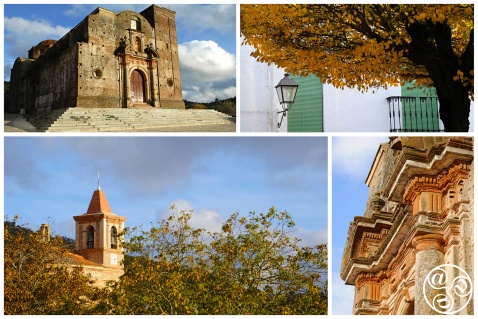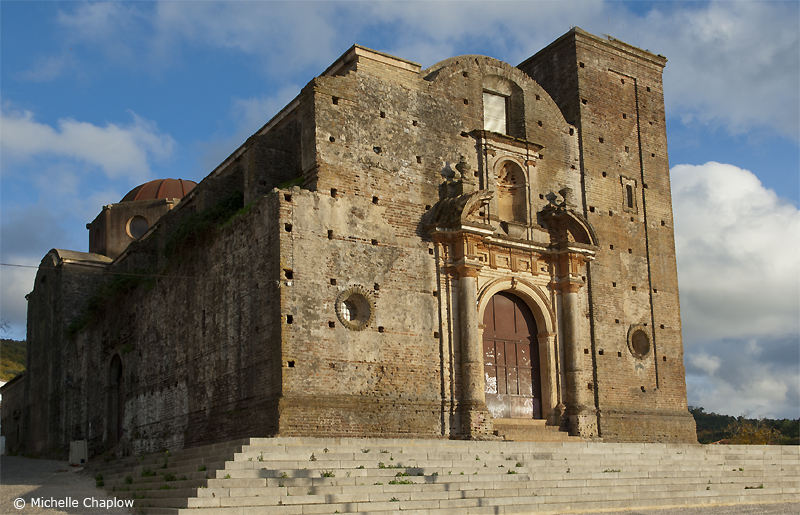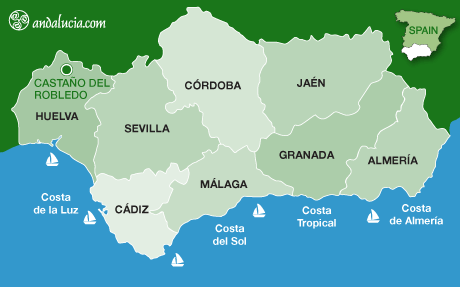
Castaño del Robledo is famous for the sweet chestnut trees that surround it and give it its name, this village has remained largely unchanged for centuries |
|
Famous for the sweet chestnut trees that surround it and give it its name, this village has remained largely unchanged for centuries. The houses are amazingly well preserved - the village was founded in 1554, and many date from the 16th century - with exquisite structural and decorative detail. Castaño del Robledo is one of the finest existing examples of Sierra architecture, and has been declared of Historic-Artistic Interest.
The chestnut trees were planted to replace native oaks which were dying out. The local economy relies on the fruit of these trees, so in autumn you will see people everywhere in the village peeling chestnuts. Today, Castaño Del Robledo accounts for half of the total chestnuts produced in Huelva province.
 |
| The village church, the Renaissance Santiago el Mayor, is a surprisingly large, imposing building for such a small population © Michelle Chaplow |
The village church, the Renaissance Santiago el Mayor, is a surprisingly large, imposing building for such a small population. Its square footprint is complemented by a façade partly of grey stone and partly painted white, and the church has been declared of Cultural Interest. Santiago del Mayor dates from the 16th century, but was extended in the 18th century, when the village gained independence from Aracena and subsequently enjoyed a peak in its economic fortunes and its population. The local economy at the time was based on livestock, mining and forestry.
The Santiago church is famous for its probable founder and former priest, Benito Arias Montano. A 16th-century theologian, natural scientist and thinker, he was the librarian at El Escorial monastery before coming to live and minister in this tiny hilltop village.
You will also find the chapel of Nuestra Señora del Rosario; an unfinished 18th century neoclassical church, which is known locally as 'the Monument'; and an attractive stone plaza which used to house the bullring. Also, look out for the small rest houses known as 'humilladeros', as well as various fountains, testament to the copious amount of water which flows beneath the village.
Don't miss the famous "Rincon de Pepe" a tiny jamon shop which is a site of pilgrimage - people come from all over Andalucia to buy their pig legs. A tiny window on the side wall affords a view of the hanging hams inside the store.
Typical local dishes include pork products, from the famous Sierra pigs, chestnuts and walnuts.
The village has very narrow streets, so it is advisable to leave you car outside the village and arrive on foot.
Important holidays in Castaño del Robledo include the local saint's day, San Pedro, on 29 June; Virgen de los Dolores on 26 August, when there is an auction, Las Fiestas de Mesa; and another saint's day, Virgen de los Angeles, on 8 September.
Castaño del Robledo is 109 km north-east of Huelva. Take the H30, leaving at exit 10A towards Sevilla, and continue on the H31. From the E1, leave at exit 75 towards Trigueros, then take the N435 and the HV5211.


